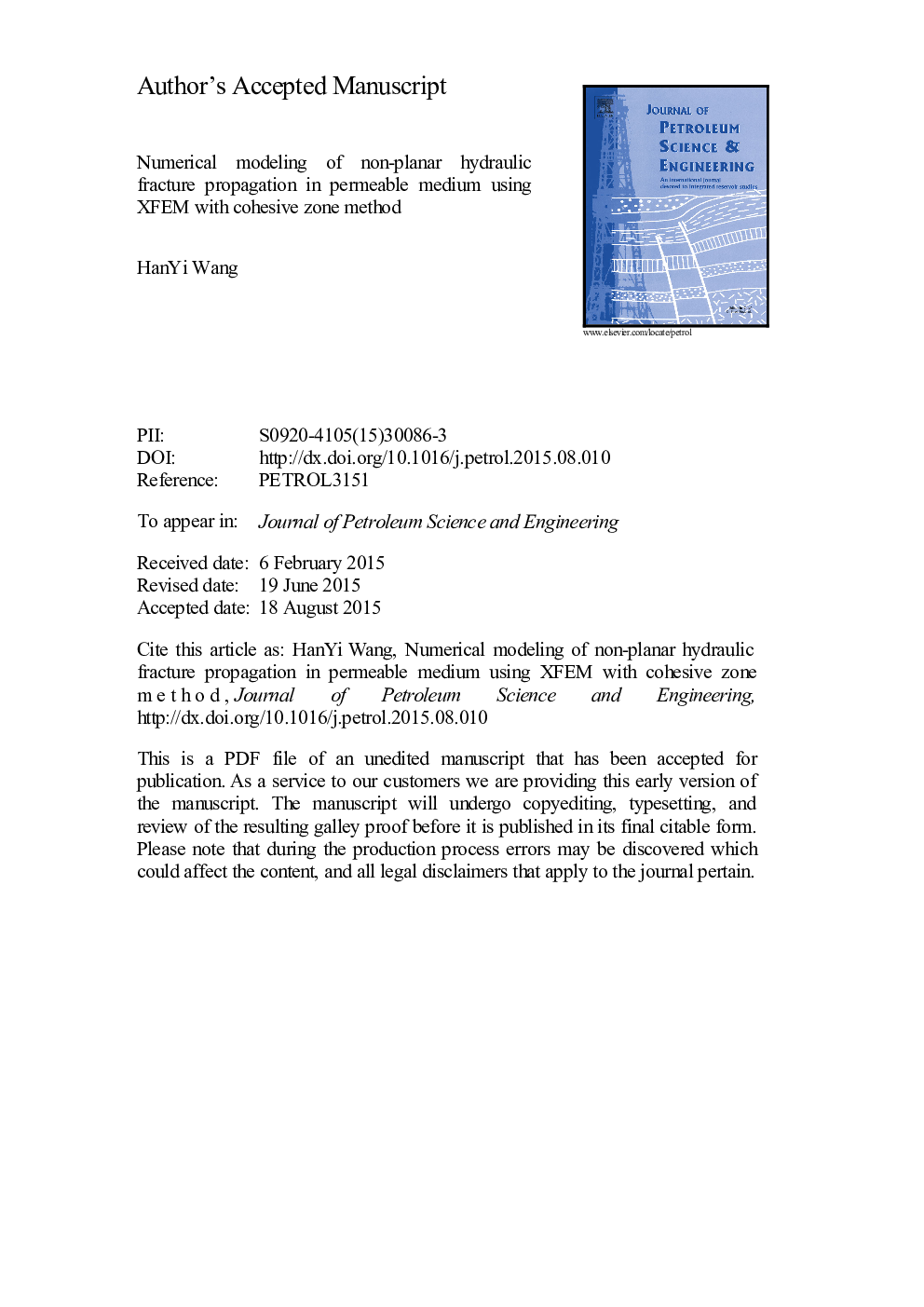| کد مقاله | کد نشریه | سال انتشار | مقاله انگلیسی | نسخه تمام متن |
|---|---|---|---|---|
| 8126331 | 1522806 | 2015 | 21 صفحه PDF | دانلود رایگان |
عنوان انگلیسی مقاله ISI
Numerical modeling of non-planar hydraulic fracture propagation in brittle and ductile rocks using XFEM with cohesive zone method
دانلود مقاله + سفارش ترجمه
دانلود مقاله ISI انگلیسی
رایگان برای ایرانیان
کلمات کلیدی
موضوعات مرتبط
مهندسی و علوم پایه
علوم زمین و سیارات
زمین شناسی اقتصادی
پیش نمایش صفحه اول مقاله

چکیده انگلیسی
With the increasingly wide use of hydraulic fracturing in the petroleum industry, it is essential to accurately predict the behavior of fracture propagations based on the understanding of fundamental mechanisms governing the process. For unconventional resources exploration and development, hydraulic fracture pattern, geometry and associated dimensions are critical in determining well stimulation efficiency. In shale formations, non-planar, complex hydraulic fractures are often observed, due to the activation of pre-existing natural fractures. The propagating of turning non-planar fractures due to re-fracturing treatment and unfavorable perforation conditions have also been reported. Current numerical simulation of hydraulic fracturing generally assumes planar crack geometry and weak coupling behaviors, which severely limits the applicability of these methods in predicting fracture propagation under complex subsurface conditions. In addition, the prevailing approach for hydraulic fracture modeling also relies on Linear Elastic Fracture Mechanics (LEFM), which uses stress intensity factor at the fracture tip as fracture propagation criteria. Even though LEFM can predict hard rock hydraulic fracturing processes reasonably, but often fails to give accurate predictions of fracture geometry and propagation pressure in ductile rocks, such as poorly consolidated/unconsolidated sands and clay-rich ductile shales, even in the form of simple planar geometry. In this study, a fully coupled non-planar hydraulic fracture propagation model in permeable medium based on the Extended Finite Element Method (XFEM), Cohesive Zone Method (CZM) and Mohr-Coulomb theory of plasticity is developed for the first time, which is able to model fracture initiation and propagation in both brittle and ductile formations. To illustrate the capabilities of the presented model, example simulations are presented on both near wellbore and far field scale. The results indicate that the in-elastic deformations induced by propagating hydraulic fracture have significant impact on propagation pressure and fracture geometry, and the prediction of fracture propagation behaviors can be extremely erroneous if ductile formations are simply treated as soft rocks with lower Young's modulus. The method discussed in this article represents a useful step towards the prediction of non-planar, complex hydraulic fractures and can provide us a better guidance of completion design and optimizing hydraulic fracture treatment that will better drain reservoir volume in formations with complex stress conditions and heterogeneous properties.
ناشر
Database: Elsevier - ScienceDirect (ساینس دایرکت)
Journal: Journal of Petroleum Science and Engineering - Volume 135, November 2015, Pages 127-140
Journal: Journal of Petroleum Science and Engineering - Volume 135, November 2015, Pages 127-140
نویسندگان
HanYi Wang,